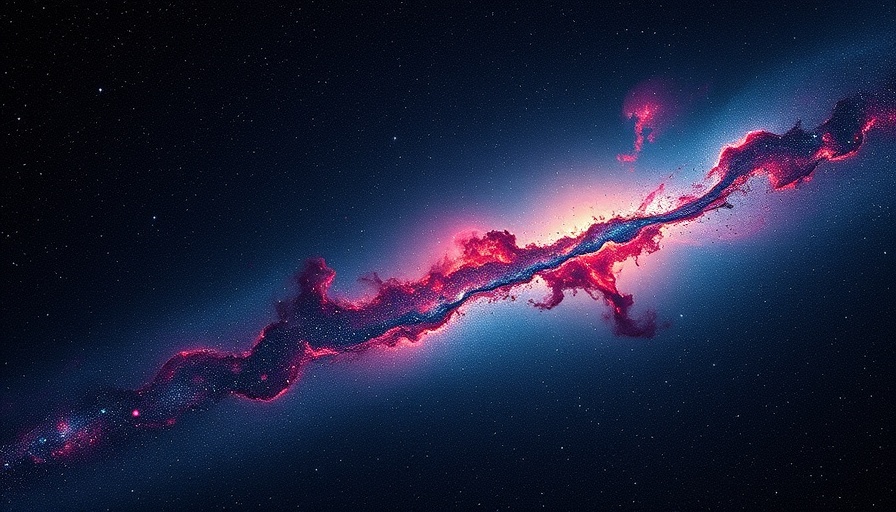
Discovering Orion: A Stunning Visual Journey
The Orion constellation, revered by stargazers for its dazzling array of stars and nebulae, was beautifully captured in a recent photo by Miguel Claro, a distinguished astrophotographer. Taken at the Dark Sky Alqueva Reserve in Portugal, this portrayal of Orion glows in striking red hues, thanks to the deep-space phenomenon known as hydrogen alpha emission — light emitted by hydrogen atoms that fill the cosmos.
The Significance of Barnard's Loop
Central to Claro's image is Barnard's Loop, an enormous nebula that encircles Orion's belt and stretches 300 light-years across. Located 1,600 light-years from Earth, this loop is part of the larger Orion molecular cloud complex, a stellar nursery teeming with the materials necessary for star formation. The beauty of Barnard's Loop continues to captivate astronomers and astrophotographers alike, making it a focal point for studies concerning stellar birth and evolution.
The Art of Astrophotography
Claro's pursuit of this stunning photograph took considerable preparation — two full months were spent readying equipment and finding the right moments during clear nights. The challenges of capturing this image were compounded by unpredictable weather and the early setting times of Orion in the evening sky. Ultimately, Claro dedicated a total of seven hours over several nights to secure the precise shot, showcasing the dedication that goes into astrophotography.
Why This Matters: The Intersection of Art and Science
Astrophotography, like Claro's work, not only captures the beauty of space but also serves as a bridge connecting the scientific community with enthusiasts and the general public. This painting of the night sky helps raise awareness about the universe's vastness and the critical importance of preserving dark skies, which are fading due to light pollution. Such images can inspire future generations of astronomers and artists, harmonizing the realms of innovation and creativity.
Future Implications for Space Observation
As technology advances, our ability to capture deep-space images will only improve. Innovations in imaging techniques and equipment provide opportunities for both amateur astronomers and professionals to explore and share their findings. Organizations continue to foster initiatives that promote night sky photography, reminding us of the solar systems' wonders above our heads.
As we remain curious about our universe, stellar imagery has the potential to spark new discoveries. Miguel Claro's red-hued portrait of Orion serves as a visual anchor — calling to us to look up, explore, and appreciate the intricate dance of stars above.
For those inspired by these views of the cosmos, supporting independent artists like Claro can enhance both their work and the ability to share the wonders of the night sky with others. High-quality prints from Claro's collection invite viewers to bring a piece of the universe into their homes, connecting art with the vast expanse of space.
 Add Row
Add Row  Add
Add 




Write A Comment